News
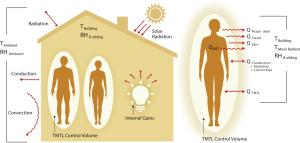
January 26, 2021
Heating and cooling buildings is a large part of global energy demand and a significant source of CO2 and greenhouse gas emissions, and in the coming decades the energy demand for heating and cooling - also known as thermal energy - is expected to grow considerably. Scientists and engineers have made many advances in lowering building energy demand by improving energy efficiency in building...
Read more
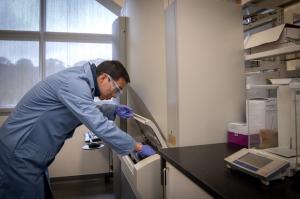
January 14, 2021
One of the aspects of lithium-ion batteries least understood by scientists has now been elucidated by a new research approach, opening the door to major improvements in battery performance, according to a new study by Berkeley Lab scientists. Their study, recently published in the journal Joule, used a technique developed by Berkeley Lab battery scientists in the Energy Technologies Area to...
Read more

January 14, 2021
In 10 years of studying thirdhand smoke, which is the toxic cigarette residue that clings to virtually all indoor surfaces for months or years, Berkeley Lab scientist Hugo Destaillats said the most frequent question he hears from the public is how to remediate property where a smoker once lived. Remediation companies frequently use ozone generators to eliminate odors from mold, tobacco, and fire...
Read more

January 7, 2021
Researchers from the Massachusetts Institute of Technology (MIT), Stanford University and Lawrence Berkeley National Laboratory (Berkeley Lab) — including Ravi Prasher — collaborated to write an article on energy, which was recently awarded the best peer-reviewed article for general readers by the American Energy Society. Prasher, associate laboratory director of the Energy Technologies Area...
Read more

January 7, 2021
The Department of Energy’s Lawrence Berkeley National Laboratory (Berkeley Lab) has named Rachel Slaybaugh, associate professor of nuclear engineering at UC Berkeley, to lead Berkeley Lab’s Cyclotron Road Division. The announcement follows an international search. Until recently, Slaybaugh served as a program director at DOE’s Advanced Research Projects Agency-Energy (ARPA-E), whose mission...
Read more
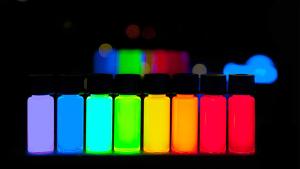
December 21, 2020
Understanding how matter interacts with light – its optical properties – is critical in a myriad of energy and biomedical technologies, such as targeted drug delivery, quantum dots, fuel combustion, and cracking of biomass. But calculating these properties is computationally intensive, and the inverse problem – designing a structure with desired optical properties – is even harder. Now...
Read more
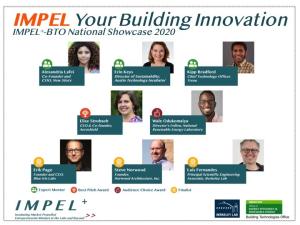
December 9, 2020
Eight IMPEL+ Innovators recently pitched their technologies at two prestigious national events in the past month, showcasing inventive ideas to industry and government experts and investors, aimed at making U.S. buildings smarter, more energy-efficient, and grid-responsive. IMPEL+, Incubating Market-Propelled Entrepreneurial-Mindset at the Labs and Beyond, is a unique program funded by the U.S....
Read more

December 8, 2020
The Bay Area Battery Summit (BABS) just concluded its sixth annual conference, which was held virtually on November 17-18. This year, the two-day conference went beyond batteries and focused on catalyzing collaboration to drive innovation among key players in energy storage. The summit brought together leading researchers and policymakers, pioneering companies and startups, as well as innovative...
Read more

December 8, 2020
The Energy Storage & Distributed Resources Division (ESDR) announced the formation of the Thermal Energy Group earlier this month. ESDR now encompasses six groups spanning a diverse set of research areas ranging from energy conversion to grid integration, all of which are part of the Energy Technologies Area (ETA) at Lawrence Berkeley National Laboratory (Berkeley Lab). The group will be led...
Read more

October 27, 2020
Applications are now open for building and energy technology scientists and innovators to participate in a unique incubator that helps propel your ideas to market. While millions of dollars are spent for R&D and small businesses for energy technologies, only a portion of these reach users and create value. The Incubating Market-Propelled Entrepreneurial-mindset at the Labs (IMPEL) is a...
Read more

October 23, 2020
An infant-warming device developed by two researchers at the U.S. Department of Energy's Lawrence Berkeley National Lab (Berkeley Lab) was recently recognized with an honorable mention in the 2020 Patents for Humanity awards. The Warming Indicator, a phase-change material temperature indicator, is an addition to the Infant Warmer that improves the latter’s functionality and safety. The Infant...
Read more

October 20, 2020
One hundred and four U.S. companies, schools, governments, and institutions are taking their building energy savings to a new level with the Department of Energy’s Smart Energy Analytics Campaign, a four-year initiative funded through the Building Technologies Office and facilitated by Lawrence Berkeley National Laboratory (Berkeley Lab) to expand the use of energy management and information...
Read more

October 20, 2020
Seven researchers in the Energy Technologies Area have recently been honored with prestigious Director's Awards at Lawrence Berkeley National Laboratory (Berkeley Lab). The awards program recognizes Lab employees' accomplishments and commitment to excellence in support of the Lab's mission and strategic goals. Lab-wide, three staff members received Lifetime Achievement Awards, and another 34...
Read more

October 20, 2020
Seven researchers in the Energy Technologies Area have recently been honored with prestigious Director's Awards at Lawrence Berkeley National Laboratory (Berkeley Lab). The awards program recognizes Lab employees' accomplishments and commitment to excellence in support of the Lab's mission and strategic goals. Lab-wide, three staff members received Lifetime Achievement Awards, and another 34...
Read more

October 15, 2020
The Department of Energy’s Lawrence Berkeley National Laboratory (Berkeley Lab) has appointed Noël Bakhtian, previously a senior policy adviser in the White House Office of Science and Technology (OSTP) and currently director of the Center for Advanced Energy Studies (CAES) at Idaho National Laboratory, as its inaugural director of the Berkeley Lab Energy Storage Center. Building on decades of...
Read more

October 12, 2020
Hydrogen fuel cells are on the rise: Germany has rolled out hydrogen-powered trains, the San Francisco Bay Area will soon see the nation’s first hydrogen fuel cell ferry, and sales of fuel-cell vehicles are up globally. It’s a technology with the potential to provide a variety of clean energy options, especially in transportation.Now the Department of Energy has announced several major...
Read more

October 12, 2020
With a day job as deputy of research for Building Technology and Urban Systems Division at Lawrence Berkeley National Laboratory (Berkeley Lab) and another full-time job as a parent to a young child, Jessica Granderson still found more time to carve out of her schedule this year to help design face shields for hospital staff.“Back in March when we were initially confronting our regional surge in...
Read more

October 2, 2020
The Energy Technologies Area (ETA) won three R&D 100 awards in the areas of higher energy efficiency in buildings, making lithium batteries safer and development of an innovative tool; all together the Department of Energy's Lawrence Berkeley National Laboratory (Berkeley Lab) took home seven awards. For more than 50 years, the annual R&D 100 Awards have recognized 100 technologies of the...
Read more

September 30, 2020
Methane is most commonly known as a ubiquitous cleaner energy source, while also being a potent greenhouse gas. It is produced from both natural sources, such as wetlands and large bodies of water, and anthropogenic sources, such as natural-gas reservoirs and livestock. At the same time, methane is a source of many important feedstock chemicals, including blue hydrogen and methanol, which is used...
Read more

September 17, 2020
Air sealing and insulation, which are common elements of energy efficiency upgrade packages, come with a bonus: In addition to saving energy, they almost always cut dampness and mold. This latest research comes from a new publication from the U.S. Department of Energy's Lawrence Berkeley National Lab (Berkeley Lab). However, the paper also found that levels of some indoor air pollutants increased...
Read more

September 10, 2020
Two researchers at Lawrence Berkeley National Laboratory (Berkeley Lab) have been recognized by the Kigali Cooling Efficiency Program (K-CEP). The awards for Nihar Shah and Won Young Park honor their work on improving the energy efficiency of cooling systems and evaluating the benefits of those improvements.Shah, Presidential Director of Berkeley Lab’s Global Cooling Efficiency Program, received...
Read more
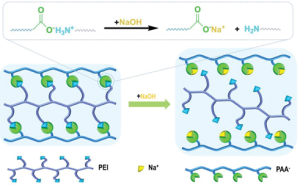
September 3, 2020
Prominent battery research has made great strides in advancing next-generation rechargeable batteries, which might use lithium-sulfur (Li-S) batteries, rather than the traditional Li-ion batteries commonly found in electric cars and mobile phones.Researchers at Lawrence Berkeley National Laboratory (Berkeley Lab) have discovered a new type of polymer that can be used as a binder in a Li-S battery...
Read more

August 18, 2020
Over the last few years of frequent and intense wildfire seasons, many parts of the U.S. have experienced hazardous air quality for days on end. At the same time a number of low-cost air quality monitors have come on the market, allowing consumers to check the pollutant levels in their own homes and neighborhoods. So, air quality scientists at Lawrence Berkeley National Laboratory (Berkeley Lab)...
Read more

August 11, 2020
Heat waves are becoming a more regular occurrence across the country. Iain Walker, Leader of the Residential Building Systems Group at Berkeley Lab, has suggestions for how to weather them. Walker has more than 20 years’ experience as a building scientist and consultant on energy use and ventilation in residential buildings. Q. Is it more efficient or economical to keep my house cool all day or...
Read more
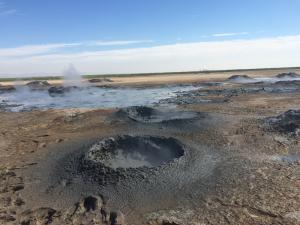
August 6, 2020
Deep beneath the surface of the Salton Sea, a shallow lake in California’s Imperial County, sits an immense reserve of critical metals that, if unlocked, could power the state’s green economy for years to come. These naturally occurring metals are dissolved in geothermal brine, a byproduct of geothermal energy production. Now the race is on to develop technology to efficiently extract one of...
Read more